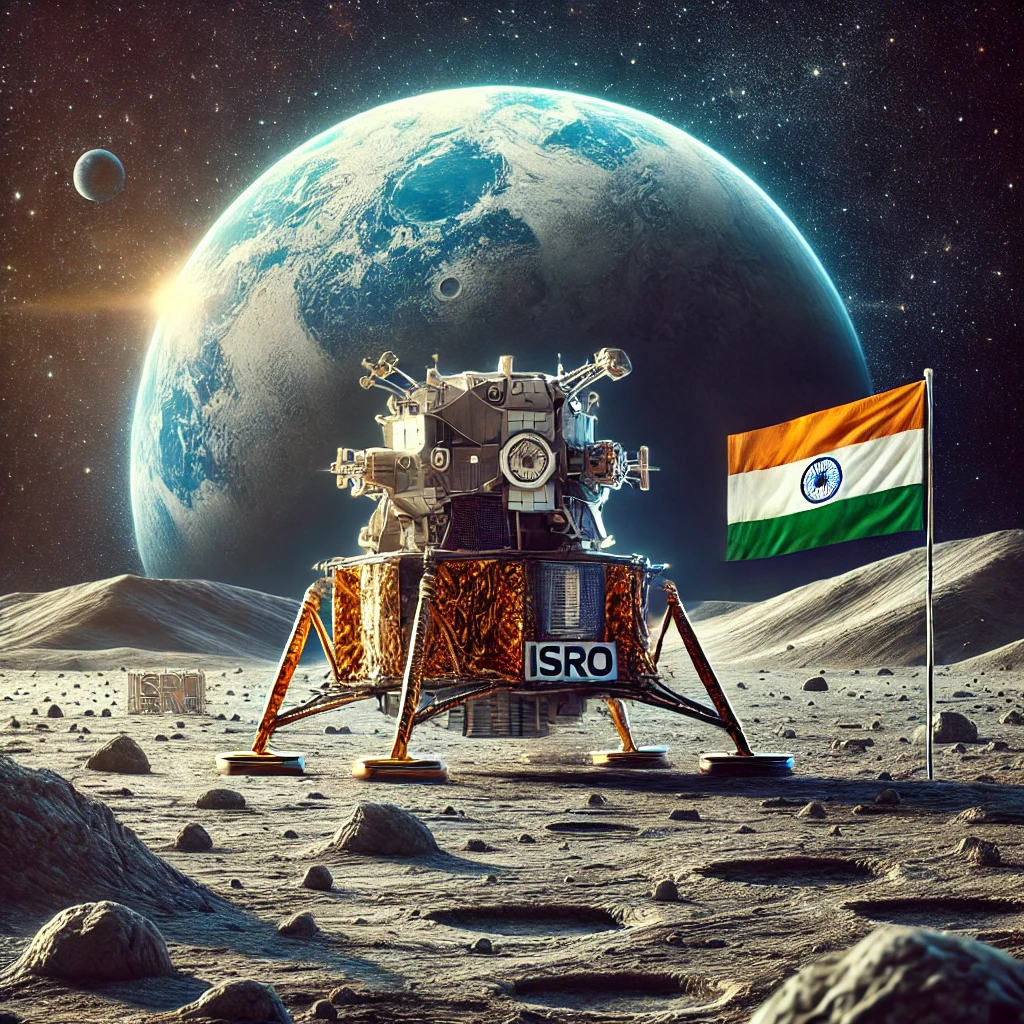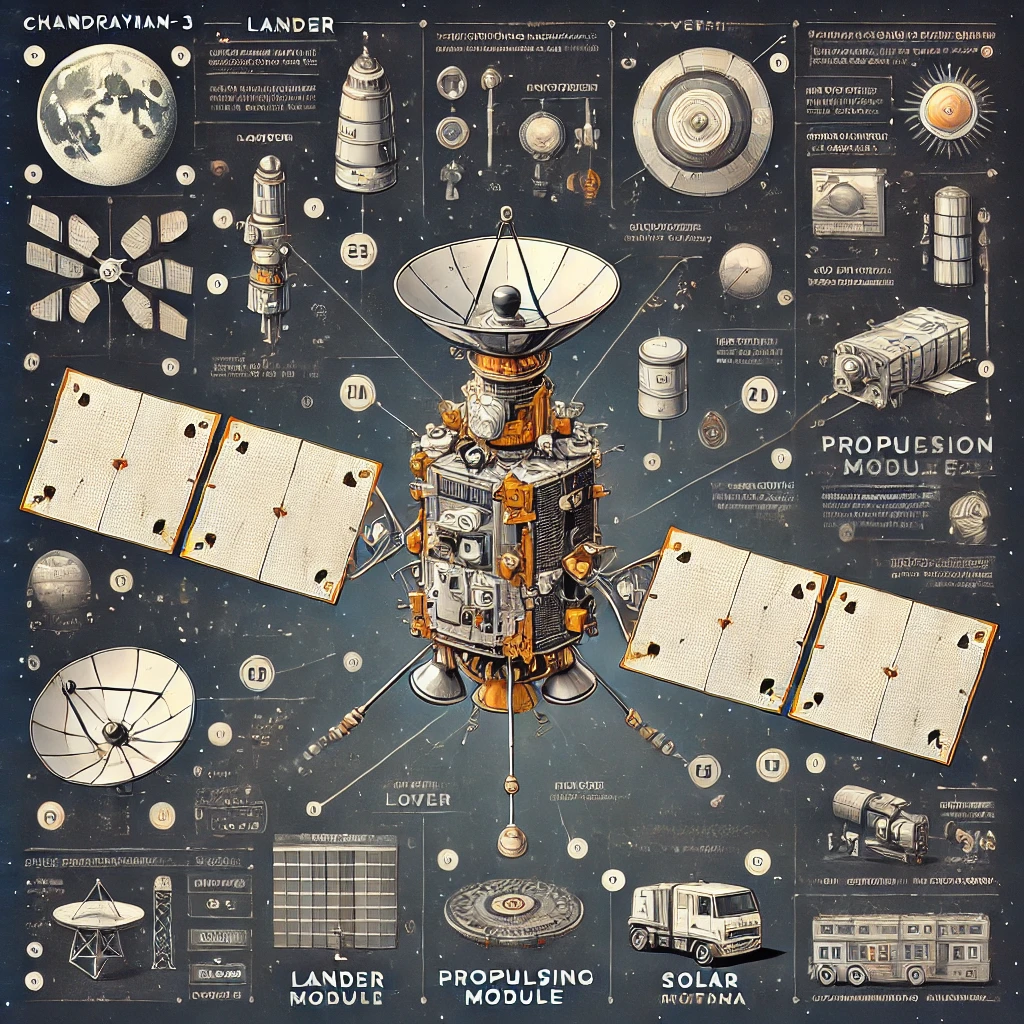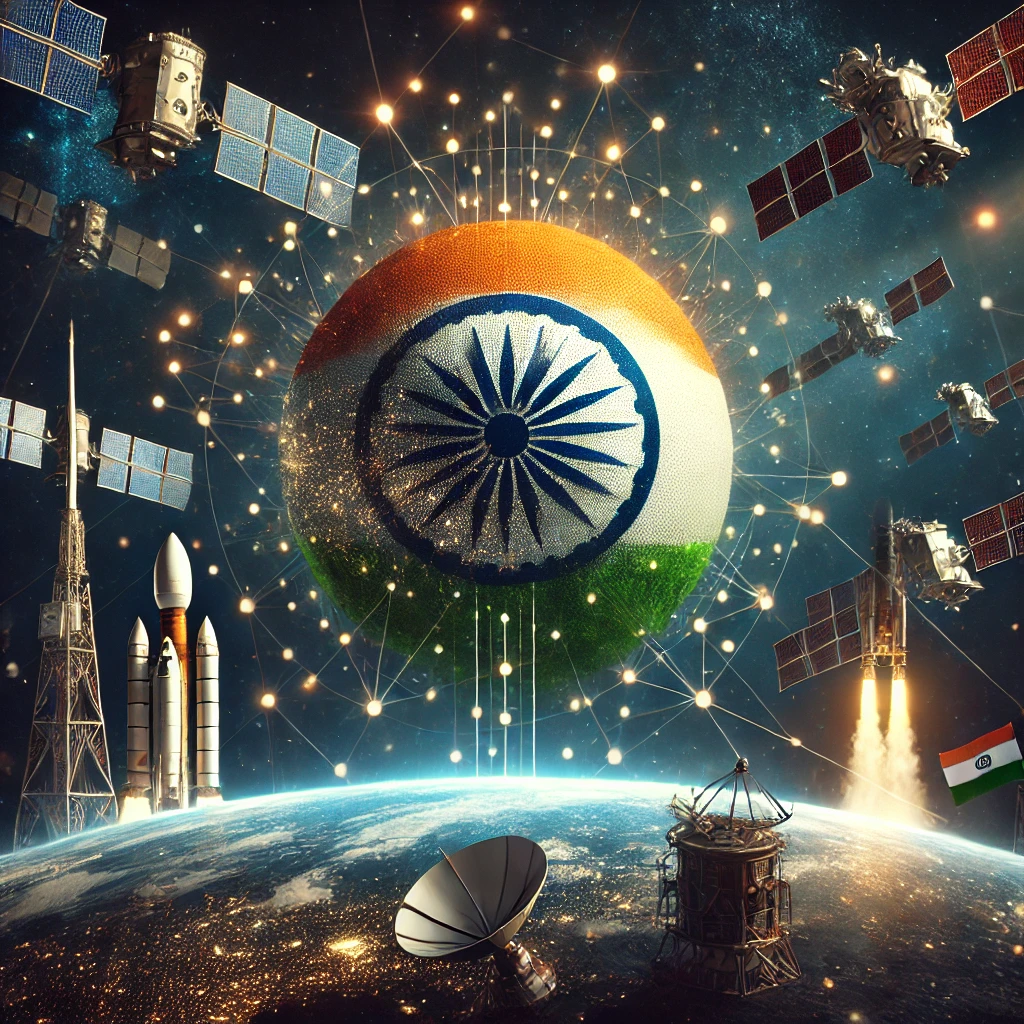India’s successful Chandrayaan 3 mission marks a significant milestone in its space exploration journey. By achieving a soft landing near the Moon’s south pole, India has positioned itself as a global leader in space technology. This mission not only elevates national pride but also paves the way for future space endeavors, transforming how humanity engages with outer space.
The Chandrayaan-3 mission, launched on July 14, 2023, from the Satish Dhawan Space Centre, successfully entered lunar orbit on August 5, 2023, and landed near the lunar south pole on August 23, 2023. This mission aims to demonstrate safe landing, rover operations, and in-situ scientific experiments on the Moon’s surface.
Chandrayaan-3 Programme
Chandrayaan-3 is India’s third lunar mission and second attempt at a soft landing. The mission consists of a Propulsion Module, Lander Module (Vikram), and Rover Module (Pragyan). Key scientific instruments include ChaSTE for thermal conductivity and temperature measurements, ILSA for seismic activity, and LP for plasma density variations. Major findings from the mission include unexpectedly high surface temperatures and the confirmation of sulfur and other elements on the lunar surface.
What is the Chandrayaan 3 Programme?
Chandrayaan-3 is India’s third lunar mission aimed at achieving a soft landing on the Moon. Launched on July 14, 2023, from the Satish Dhawan Space Centre, it marks a significant milestone in India’s space exploration journey by successfully landing near the lunar south pole on August 23, 2023.
Chandrayaan-3 is India’s third lunar mission and its second attempt at a soft landing on the Moon. Launched on July 14, 2023, from the Satish Dhawan Space Centre, it entered lunar orbit on August 5, 2023. The mission achieved a historic milestone with a successful touchdown near the lunar south pole on August 23, 2023.
Mission Objectives
The primary objectives of Chandrayaan-3 include demonstrating a safe and soft landing on the lunar surface. Thereby, ensuring the rover’s mobility on the Moon, and conducting in-situ scientific experiments to enhance our understanding of the lunar environment.
Components
Chandrayaan-3 comprises three main components: the Propulsion Module, the Lander Module, and the Rover Module. The Propulsion Module carries the lander and rover to a 100 km lunar orbit and includes the SHAPE payload. The Lander Module (Vikram) has instruments like ChaSTE, ILSA, and the Langmuir Probe to study the lunar surface. The Rover Module (Pragyan) uses APXS and LIBS to analyze the lunar soil and rocks.
Major Findings
Chandrayaan-3 has yielded significant scientific findings, enhancing our understanding of the lunar surface and environment. These discoveries are crucial for future lunar exploration missions and scientific research.
Lunar Surface Temperature Surprise
The Chandra’s Surface Thermophysical Experiment (ChaSTE) on Chandrayaan-3 revealed that the lunar surface temperature near the south pole can reach up to 70 degrees Celsius. Contrary to the expected range of 20 to 30 degrees Celsius, providing new insights into the Moon’s thermal environment.
Lunar Surface Elements Confirmed
The Pragyan rover confirmed the presence of several elements on the lunar surface, including sulfur, Aluminum, Calcium, Iron, Chromium, Titanium, Manganese, Silicon, and Oxygen. These findings are critical for understanding the Moon’s composition and geological history.

Why is Chandrayaan-3 Significant for the Indian Space Programme?
Chandrayaan-3 represents a strategic and scientific milestone for India. This showcases its capabilities in space technology and positioning the nation as a leader in lunar exploration and the New Space economy.
Leadership in Space Technology
Chandrayaan-3 places India among an elite group of nations, including Russia, the US, and China, with demonstrated lunar soft landing capabilities. It highlights India’s advancements in indigenous cryogenic engines. Thus, its emerging role as a global hub in the New Space economy.
Strategic Significance of Soft Landing
The soft landing capability demonstrated by Chandrayaan-3 has strategic implications, enabling advancements in standard refueling, docking technology, smart space robot technology, and facilitating interplanetary missions and sample retrieval.
Investigates Lunar Properties
Chandrayaan-3’s payloads have conducted comprehensive studies of the lunar surface. It confirms the presence of water ice and reveals details about the Moon’s molten history and subsurface water ice, contributing valuable data for future lunar missions.
Insights for Defense and Aerospace
The mission provides critical insights for India’s defense and aerospace sectors, particularly in missile defense and reusable launch vehicle technology. It can significantly reduce the cost of future space missions.
Strategic Tools and Products
Technologies developed for Chandrayaan-3, such as autonomous rovers, have applications beyond space exploration, including disaster management and infrastructure monitoring. Thereby, showcasing the mission’s broader strategic and commercial potential.
Space Tourism and Economic Activities
The success of Chandrayaan-3 boosts interest in space tourism and economic activities, potentially leading to the development of private space parks and in-orbit manufacturing hubs and fostering a vibrant ecosystem of space-tech startups and MSMEs.

What is the Future Space Programme of ISRO?
ISRO’s future space missions aim to build on the success of Chandrayaan-3, focusing on advanced lunar exploration, interplanetary missions, and enhancing India’s capabilities in human spaceflight and scientific research.
Chandrayaan-4
Chandrayaan-4 is envisioned as a sample return mission, aiming to retrieve lunar surface samples. This mission will build upon the achievements of Chandrayaan-2 and Chandrayaan-3, furthering our understanding of the Moon’s composition and history.
LUPEX
The Lunar Polar Exploration Mission (LUPEX), a collaboration between ISRO and JAXA, targets the Moon’s polar regions, particularly permanently shaded areas, to investigate water presence and assess the potential for a sustainable long-term lunar station.
XPoSat
The X-ray Polarimeter Satellite (XPoSat) is India’s first dedicated polarimetry mission to study bright astronomical X-ray sources. It will carry two scientific payloads in low Earth orbit to explore extreme conditions in space.
NISAR
The NASA-ISRO Synthetic Aperture Radar (NISAR) mission will map the globe in 12 days, providing consistent data to study Earth’s ecosystems, ice mass, vegetation biomass, sea level rise, and natural hazards like earthquakes and tsunamis.
Gaganyaan
Gaganyaan aims to send humans to space and return them safely to Earth. The mission will include two unmanned flights and one manned flight, using the GSLV Mk III launch vehicle, marking a significant milestone in India’s human spaceflight capabilities.
Shukrayaan 1
Shukrayaan 1 is planned to orbit Venus, studying its geological and volcanic activity, emissions, wind speed, cloud cover, and other planetary characteristics. Hence, providing new insights into our neighboring planet.
SPADEX
The Space Docking Experiment (SPADEX) will mature technologies related to docking, orbital rendezvous, formation flying, and in-space satellite servicing. It is essential for future space missions and long-term space habitation.
Conclusion
Chandrayaan-3 marks a monumental step in India’s quest for space leadership. It showcases our technological prowess and opens new avenues for scientific exploration and international collaboration. As we look forward, strategic investments, robust policies, and public engagement are crucial. UPSC aspirants must grasp this transformative potential, envisioning India’s future role as a global space leader.

